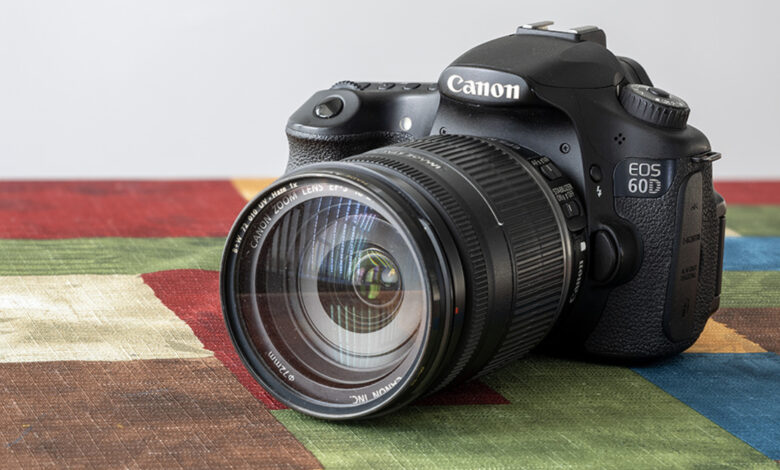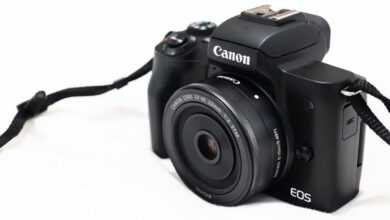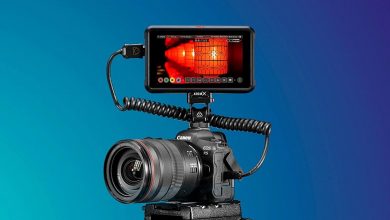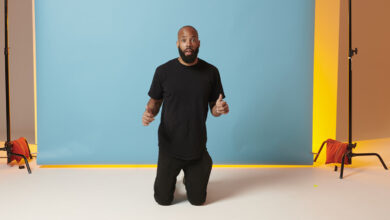Why the Canon EOS 60D was ahead of its time and doesn’t deserve all the hate it gets

The Canon EOS 60D was widely derided when it launched in 2010 for “cheapening” the venerable xxD series compared to its predecessor, the semi-professional 50D.
This is a review of a camera that has not stood the test of time. 60D really ahead of its time.
Let me take a moment to talk about this hot take: The 60D was Canon’s first DSLR to use a vari-angle screen. It was the first in the xxD series to use the still-valid LP-E6 battery, and it was also the first to add video to the series. Its DIGIC 4 menu system still mirrors the systems used in the company’s modern mirrorless cameras today. It moved the series to the now ubiquitous SD card format. None of that is a bad thing, 14 years later.
Why are there haters?
If that’s the case, why did the camera get such a negative reception from users and the press when it launched? Canon didn’t do a good job of managing expectations. The 20D, 30D, 40D, and 50D were all aimed at professionals who couldn’t afford or need a 1D-series camera. The controls and magnesium alloy construction of these cameras more or less mimicked the 1D, minus the integrated battery grip.
Those features have been carried over to the new 7D, and so the 60D sits somewhere between that camera and the Rebels. Canon did this by lowering the price of the camera and making the body plastic, removing the AF joystick (which didn’t return until the 90D) and a few controls and menu options in the process. While the plastic makes the body lighter, the rest of the changes weren’t well received, even though the camera is priced lower than its predecessor at $1,099 body only.
What will it look like in 2024?
I recently bought a 60D and a Canon EF-S 18-200mm f/3.5-5.6 IS Lens as a birthday present for my son, who is getting more and more interested in photography. Of course, I had to experiment, and so, I took it along with my usual photos EOS R6 Mark II Camera. Having used these cameras extensively, the idea for this article came to me when I reviewed the 60D: the 60D, despite being a dinosaur in every way compared to the R6 Mark II, feels more “professional” in the hand than the R6 Mark II. I was surprised to find myself feeling this way, and I think one of the reasons is the weight of the body. Indeed, it was surprising to learn that the 60D is actually heavier than the R6 Mark II: 1.6 pounds compared to the newer camera’s 1.5 pounds.
And while the grip and body style are technically no more ergonomic than the R6, it has that classic Canon heft. Indeed, the body has aged quite well, which I can’t say for myself, I suppose.
That said, while the body feels great to hold, using the camera is a reminder of how far we’ve come. Switching back and forth between the R6 in a portrait, it’s clear that having the full viewfinder for eye-tracking autofocus is much easier. Having to align the focus point on your eyeball or resort to refocusing is a recipe for more missed shots.
And while modern mirrorless cameras can seamlessly switch between the viewfinder and the vari-angle LCD, the 60D doesn’t. Canon’s excellent dual-pixel CMOS autofocus technology, which powers all the very capable focusing systems in modern Canon cameras, didn’t exist when the 60D launched, and so while phase-detect autofocus through the viewfinder is quite fast and accurate, contrast-detect live view focusing on the screen is so slow that it’s almost unusable. While it’s ostensibly capable of detecting faces in this mode, it’s pretty bad at picking them out and focusing on them. Without a touchscreen, the whole live view endeavor is a frustrating exercise.
Really, the live view display is only useful when shooting with a tripod like this shot of the Fire Island Lighthouse:
I used manual focus when taking these photos, although in the end, contrast focus helped me get a better photo.
Despite all these limitations, this was the camera that many of my students used to shoot photos and full HD video about a decade ago, and I was impressed with what they were able to achieve with functionality that seems so limited today.
It is amazing how much more convenience mirrorless cameras have brought to users in this era.
Image quality
Having said that, do these images hold up better over a decade after the camera was released?
The sensor in this camera has been used in several other Canon cameras, most notably the Canon EOS Rebel T2i And Canon EOS 7D Camera. That’s not to say the sensor is bad, but where you can really dig three or four stops into the shadows to pull off an image on current cameras, that’s not really the case here. You can expose for up to a stop or two before image quality really starts to degrade and noise becomes annoying.
This photo of the same lighthouse was taken around 8pm as night fell and a storm was approaching. For comparison, just for fun, I took the same photo with my iPhone (using raw format and edited in Photoshop):
I pushed this exposure up to 1.6 stops, and that’s about as far as I felt comfortable pushing the raw file out of the camera. However, while the iPhone looks a little better at small viewing sizes, the DSLR and lens run circles around it, especially in the trees in the foreground and the red-roofed building, where the iPhone blew out all the detail. An old DSLR still beats the iPhone any day.
Although I was initially quite indifferent to the camera’s image quality, I tested the camera again at the duck pond near my house and this time instead of the consumer superzoom lens, I used Canon EF 100-400mm f/4.5-5.6L IS II USM Lens. I haven’t used a consumer zoom lens in years, and this is a reminder of how important the lens is to this equation, above all else:
The 60D sensor is still good, even in 2024. There’s a reason Canon keeps reusing it.
Conclusion
If you’ve been shooting a lot of mirrorless cameras lately, it’s always fun to revisit the past. People always talk about how they used to shoot film to slow down and be more intentional about their photography, and picking up an older DSLR is just another way to do that. The plus side of using a camera like the 60D is that you don’t have to worry about finding a battery for it, or finding a CF card reader, or whether your software will read its files. It’s modern enough that everything just works.
While it will now be my son’s semi-daily camera, I may borrow it from time to time. There’s something about the feel of these old Canon DSLRs in my hands and the way they work that makes them more fun to photograph than when they first came out and I just treated them as my tools for the day. Maybe it’s the novelty of using something I was used to at an earlier point in my photography career, or maybe it’s something else that I can’t quite put into words. Certainly, a EOS R10 CameraThe closest equivalent to this camera today, may outperform this camera and has better controls, but its shooting experience is not as realistic as this camera.
What a time to live in when for just a few hundred dollars you can buy a camera that many photographers dreamed of when it first came out.
Do you own a 60D? Do you still shoot with it? Leave your thoughts and images with this camera in the comments below.






